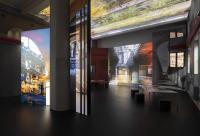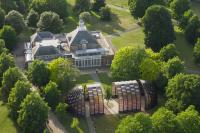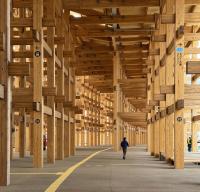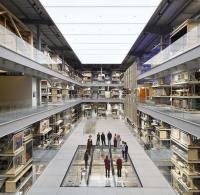Grazing in rural regeneration and fire prevention
Pedrógão Grande, Portugal
The project seeks to propose a process of regeneration and transformation for a rural territory, abandoned and constantly affected by rural fires. Through a unifying gesture, applying the concept of commons on the margin of the Cabril reservoir, enabling the use of this dormant territory.
This project takes place on the margin of the Cabril dam, between the town of Pedrógão Grande, known worldwide for the deadliest fire in Portugal in 2017, and the town of Pedrógão Pequeno. The Cabril valley has undergone several crossing attempts over the years, to bring the two towns closer together but despite being connected from a point of view physical they could not be further apart, which proves to be an obstacle in the management of a common asset- the margin. The Cabril margin is a protected, unbuilt territory that has become an abandoned forest space.
The concept of the project stands in the ideia of transforming and repairing rather than building, and also through architectural acupuncture. The unifying gesture begins with the introduction of a community herd onto common land, on the “abandoned” margin of the reservoir. The reintroduction of grazing is a return to a traditional system that once characterized the territory but for it to be sustainable it is necessary to innovate and adapt to the current reality, with the figure of the shepherd now being represented by the community. A symbiotic relationship is created where the landscape serves the animals, in the same way that they become active agents in its maintenance and mitigation of rural fires. From this perspective, a new way of rehabilitating the forest landscape is proposed, replacing invasive species with native species, in order to recover the biodiversity of this territory and consequently, its fauna and flora. A transhumance path is designed along the margin that creates spaces of shade and water, allowing shelter for the herd and other living beings, enabling connections between humans and non-humans. The end of the path on each margin is marked by the corral, an interspecies structure, in continuity with the landscape. The corral is developed between two walls, which are the method of stabilizing the land being crossable from end to end. It is bordered by a ha-ha and a living hedge. The wooden and stone covering rests on the walls, collecting water at their ends. In the upper part of the roof, there is the shepherd's shelter. All beings have a role in an ecosystem and architecture can respond to human and non-human species, respecting other species and including them in thought reveals a relationship of reciprocity that marks the multispecies future.












